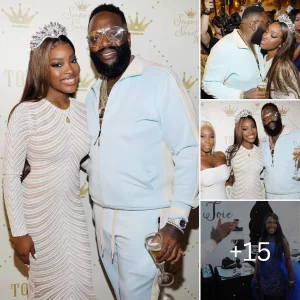Susan Morrison is a landscape designer and author of the new book, The Less is More Garden – Big ideas for designing your small yard. She joins us for this podcast to discuss some of her fascinating ideas and philosophies for small space garden design.
While her book is tailored to small space gardens, I found a wealth of informative ideas that will help me in the continuing design of my five-acre property too. So regardless what size space you may be working with, I’m confident there will be something useful for you here.
Transform Your Garden Dream Into Reality
Often, this phrase conjures up visions of a lush, flower-packed, perfectly-manicured setting. The truth is, small space garden design is a great exercise in paring down all your big garden ideas to what’s most important – to your reality.
Use this garden opportunity to think carefully about how you will use the space. Be honest with yourself. If you don’t enjoy sitting outside after dark, perhaps that fire pit isn’t such a good idea after all.
Susan Morrison, author of The Less is More Garden – Big ideas for designing your small yard
Consider all the magazine or Instagram pictures you’ve been drawn to, the plants you’ve been dreaming about, and all those entertaining spaces – then distill them all into what is truly impactful to your lifestyle.
Questions Every Gardener Should Ask
How do you cut through all the details necessary to plan and prepare? Begin with what Susan refers to as The Three W’s:
- What will you be doing in the space?
- When will you be outside?
- Who will be with you?
You should enjoy being in your garden space, regardless of its size. You should enjoy looking at it. So, be practical – not aspirational. A thoughtful assessment to align the space functionality with your habits will ensure that the garden is a pleasure – not just something else on your maintenance To Do list.
Answering the Three W questions honestly will help cut through the dreamy photos and idealized vision. You will be able to prioritize the elements that matter most and maximize your budget by spending accordingly.
If you don’t enjoy entertaining outside, save some money by not investing in that large patio table set. Sure, it may look nice on the showroom floor, but you will never regret prioritizing that precious yard footage for something more in tune with your every day.
Looking Through Green-Colored Glasses
For most of us, our vision of what “home” really means harkens back to those childhood days of vast garden expanse. It used to be commonplace for our homes to be small but surrounded by a large yard.
This is how many of us remember our childhoods – lots of room to run, ballgames on a seemingly endless lawn, etc. That is rarely our present-day reality.

Use “see through” plants to create a sense of subtle separation. (photo: Jude Parkinson-Morgan)
This sentimentality can get in the way when designing your present-day landscape. Just like the inside of your home, the outside of your home should reflect your present lifestyle.
Pragmatism can, surprisingly, help you create something truly special in your garden space.
All Great Things Start Somewhere
Once you’ve identified your priorities, don’t forget to begin. Sounds obvious, right? Yet, small space garden design can be intimidating. Paralysis by analysis.
We feel that – because it is small – it must be perfect. If you make a mistake in a large garden, that error will be overlooked in the vastness of it all. Small spaces offer less room for error.
Susan compares this to a dinner party. If you invite a large group over, and you make several different dishes; one dish gone wrong is a minor hiccup. If instead, you plan to serve one feature dish to everyone – well, it had better be phenomenal. Less is … well, more pressure.

Your design should include space for activities you enjoy, like a comfortable lounge chair for reading or relaxing. (Photo: Doreen Wynja)
Maybe you aren’t designing a space from scratch but just want to amp up your existing small garden. Where do you begin with that? Well, it’s still important to ask yourself those Three W’s and make sure you’ve got those bases covered or identify those changes.
Sometimes though, you just need help pulling all those established plantings and design accessories together for more cohesiveness or punch. Susan recommends asking a friend to be a fresh set of eyes. That fresh perspective can call your attention to things you may have stopped seeing years ago or new ideas you hadn’t considered.
Making an Impact – Illusion Is Everything
Big item = big impact is a true equation. However, small space garden design reminds us that there are many ways to make an impact. In fact, small gardens do have certain advantages over those sprawling lots of our childhood.
When you walk outside, do you glance around the garden and the mystery is gone, because you can see everything in a moment? That’s not because the space is small. It’s because you haven’t created a sense that there is more to explore.
Utilize a disappearing pathway.
Susan suggests extending fence lines just beyond the edge of the house. That allows you to build a path that leads just out of sight. Even if that path only travels a couple of feet around the corner, the allure of something being out of sight of your patio door generates impact.

Lush foliage conceals a path that wanders through a small space garden.
Tuck in surprises. Whether they are small objects or Forget-Me-Nots tucked under the large leaf of a hosta, weave in elements that you or your visitor need to search for or discover over time.
Work some space magic. Since small spaces can feel confining, Susan utilizes double-duty design to create the illusion of more room.
Seating space is a good example of double-duty design. Seating can be a challenge in small gardens. If you entertain, you may feel it’s necessary to fill your space with chairs and tables, perhaps foregoing design.
Yet, seating and design can coexist beautifully.
If you are adding a retaining wall or other hardscapes, build the element to a height of 18” – the ideal height for sitting. Top that ledge with a cement cap or other flat surface that is at least 8” wide. Your entire retaining wall ledge transforms into the perfect seating spot – or just looks beautiful when no one else is around.

Retaining walls can do double duty as extra seating. (photo: Tai Williams)
Raised beds offer another perfect opportunity for double-duty seating. Did you know 18” also happens to be the perfect depth for raised beds? A little garden design kismet!
Maybe you think a raised bed vegetable garden will look too unkempt for your small space? The bed structure will create some order out of that edible chaos, and never underestimate how drawn your guests will be to a vegetable bed.
Getting Intimate
Small gardens can and should create a sense of intimacy. Think of your outdoor space as just another room in your home, and design it using the same principles.
Just as you might group chairs around a fireplace inside, look for a wall or any vertical space in your garden around which you can group two or three chairs. That area – even though small – won’t feel cramped but, instead, becomes a cozy garden room.
Even those of us with large landscape areas need intimate spaces. It’s all in defining some boundaries and building small “rooms” into the larger area. Oftentimes, homeowners start by thinking the only way to create a sense of enclosure is to add hardscape – build a wall.

An intimate space is tucked into a larger garden. (photo: Susan Morrison)
An intimate outdoor area can be better served with a green wall – utilizing trees, shrubs or other plant materials to create division. Just remember that, when using plants as your building material, it can be easy to lose sight of proportion.
A common mistake when planting to screen for privacy, for example, is to use trees that will mature to 30’ or more. You probably wouldn’t build a 30’ concrete wall, so don’t “build” a 30’ green wall either.
Intimacy also comes through a sense of place. Although memories of your past can hold a strong influence on your garden ideals, that past may be getting in your way.
Design your landscape to reflect your present-day area. This will more easily foster a sense of place, and utilizing regional plants in your garden will also cut down on maintenance. If you are committed to including favorite plants from your childhood, try them in containers or look for something with similar qualities that will perform better in your climate.
What many of us forget is that intimacy develops through the revelation of your personality. When your garden is a reflection of who you are, you will feel most comfortable there. Also, your visitors will come to know and draw nearer to you through your garden.
You decorate inside using treasured items or photos that make your heart sing. Do likewise in your landscape.
The Art of the Focal Point
When you read the words “focal point” does your mind automatically jump to a vision of a large, white fountain or maybe a vine-covered pergola? A focal point doesn’t need to be large, and it doesn’t need to be something far off in the distance of a sweeping landscape.
A focal point is simply something that stands out from its surroundings – something distinct. Small gardens need focal points too – they help create a view or views of the space.

A water feature helps attract birds and butterflies to a garden. (Photo: Saxon Holt)
There are three types of focal points:
1. One that leads the eye
An element that arrests your vision momentarily. This creates a visual pause before your eye continues to take in the whole garden space.
2. One that unifies
If you separate spaces with an element that can be seen and appreciated from all sides, it becomes a unifier. Think circular.
A fountain or an urn is a good example of a unifier. The unifier can be placed between two distinct living spaces to separate them visually, yet because it can be enjoyed from both spaces, it also unifies them.
3. One that can be enjoyed from inside your home
When you’re indoors, your windows frame the view outside. Bear those framed areas in mind when designing your small space, and use them to create a focal point.
One element, be it plant or object, can serve as two or even three types of focal point. It’s all in how you design your space.
Design Your Color Story
Is there a color or a color combination that always appeals to you? If you want to feel calm while in your garden, what color(s) calms you? Utilizing a color theme is another means of designing around your personality.
Perhaps you have a favorite vacation spot? What colors remind you of your time there?
Susan is a big proponent of designing with color stories or themes, and there are some remarkable photograph examples in her book.
A color theme can be monochromatic – using plantings and furniture of all the same color, like shades of blue. A color theme can be made up of complementary or contrasting colors, such as yellow and orange. Just remember, there can be too much of a good thing.

Choose flowering perennials that bloom over a long season. (photo: Jude Parkinson Morgan)
Susan gives the example of using a bold blue and yellow color theme. In a small space, such a strong theme can be overpowering, so look for gold and teal elements instead. You can use small pillows or container plants to bring in the stronger blues and yellows. The marriage of the toned-down shades with small pops of the bolder shades you love will combine to remarkable small-space effect.
Designing for color doesn’t need to be complicated. It may be as simple as finding colored accessories that play off the colors of your plant foliage. A chartreuse chair takes on a whole new appeal when combined with a lime-toned sweet potato vine. Same too, a crimson container next to a Japanese maple.
Three Keys to Success
There are so many valuable ideas in Susan’s book, but they all revolve around her Three Keys to Success:
1. Scale & Proportion
These aspects are of particular importance in the small space garden. In a small garden, you are the most important fixed object. How the other garden elements compare to you in scale is the primary factor. Small space shouldn’t dictate small plantings and accessories.
How the garden elements relate to each other is where proportion comes into play. If you plant a tree that will grow to 30’ high, will it be proportionate to your other garden elements? Probably not.

Remember – comfort is king! Choose furniture you can sink into. (photo: Tai Williams)
2. Circulation
Plan your garden to allow people to move naturally and easily through. If you incorporate tables and chairs, be sure there is room to walk around them or to scoot the chair back during a relaxed conversation.
We all tend to map out our space – take all our measurements, graph out walkways and garden beds. It’s important to step down from that bird’s eye viewpoint to visualize the experience you will have with garden elements.
Susan suggests making cardboard cutouts to match the dimensions of things like chairs and fountains. Place the cutouts where you envision them. Can you navigate around them easily? Do they block the view of a focal point or the scene out your window? This exercise will help you to anticipate problems.





